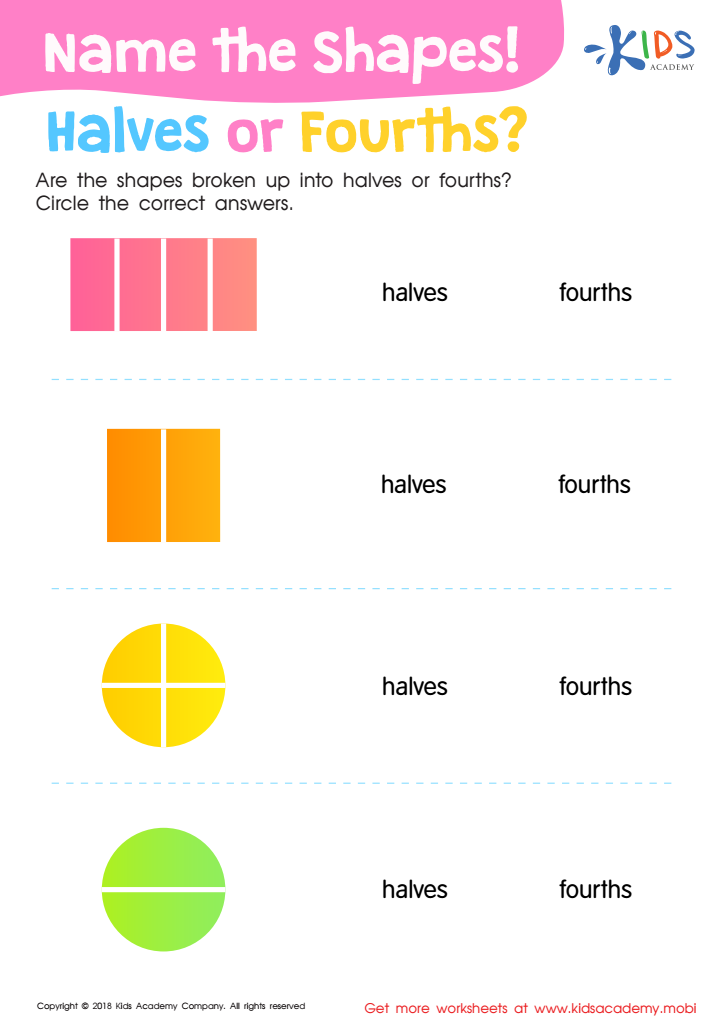Vocabulary Building Geometry Worksheets for Ages 5-7
3 filtered results
-
From - To
Unlock your child's potential with our engaging Vocabulary Building Geometry Worksheets designed specifically for ages 5-7! These interactive worksheets introduce young learners to essential geometric terms and concepts, making math both fun and educational. Through exciting activities, kids will explore shapes, sizes, and spatial relationships while enhancing their language skills. Our user-friendly activities foster a love for geometry, promoting critical thinking and creativity. Perfect for home or classroom use, these worksheets cater to diverse learning styles, ensuring every child can thrive. Help your child build a strong foundation in math vocabulary and boost their confidence with our expertly crafted resources today!


Fruits Match Up Worksheet


Geometry: part 1 Worksheet


Name the Shapes Halves or Fourths? Worksheet
Vocabulary building in geometry for children ages 5-7 is crucial for several reasons. Firstly, young learners are at a stage where they absorb language naturally, and learning geometric terms helps expand their vocabulary, improving overall language skills and comprehension. By introducing them to concepts like "triangle," "circle," "symmetry," and "angle," we equip them to express ideas clearly and accurately, fostering effective communication.
Secondly, understanding geometry lays a foundation for critical thinking and problem-solving. Engaging with shapes and spatial relationships enhances a child’s cognitive development, nurturing their ability to think logically and make connections across different subjects.
Moreover, early exposure to geometry concepts prepares children for future math learning. Mastery of basic geometric vocabulary promotes confidence and interest in mathematics, making them more willing to explore complex concepts later.
Additionally, integrating vocabulary building into geometry lessons can turn learning into an interactive and enjoyable experience, encouraging creativity and exploration. Parents and teachers who prioritize this developmental aspect contribute significantly to their children's academic growth, social-emotional skills, and lifelong love for learning. In summary, building geometric vocabulary is a multifaceted approach to early education that benefits cognitive, linguistic, and mathematical development.

 Assign to My Students
Assign to My Students






























